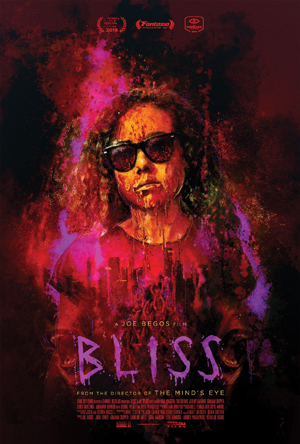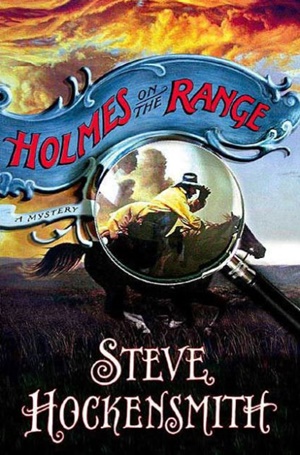Fantasia 2019, Day 12, Part 2: Bliss
 I had been planning to head home after the first movie I saw on July 22, Fly Me to the Saitama. But looking at what followed it in the Hall Theatre, I decided to stick around. Bliss was billed as an unconventional punk vampire movie, and indeed director Joe Begos introduced it to the crowd as a “hallucinatory splatter movie about sex, drugs, rock n’roll, and vampires.” Fair to say I was curious, unsure whether to expect something very good or off-the-rails bad. What I got is maybe best described as off-the-rails good.
I had been planning to head home after the first movie I saw on July 22, Fly Me to the Saitama. But looking at what followed it in the Hall Theatre, I decided to stick around. Bliss was billed as an unconventional punk vampire movie, and indeed director Joe Begos introduced it to the crowd as a “hallucinatory splatter movie about sex, drugs, rock n’roll, and vampires.” Fair to say I was curious, unsure whether to expect something very good or off-the-rails bad. What I got is maybe best described as off-the-rails good.
First came a 13-minute short, “MJ,” directed by Jamie Delaney from a script by Delaney and Coral Amiga. Amiga also stars as Mary Jane, a quiet, isolated young woman who becomes increasingly wrapped up in social media and online hook-ups. It is not long before this obsession turns violent. It’s a well-shot film, with engagingly minimal dialogue. Amiga underplays her part to good effect, letting viewers alternately sympathise with and be appalled by her character.
Then Bliss. Dezzy (Dora Madison, of various TV series including Dexter, Chicago Fire, and Friday Night Lights) is an artist in Los Angeles, behind on her rent and about to get kicked out of her apartment-studio. She’s promised her agent a new painting, but hasn’t completed a picture in some time as she tries to get clean. Then she visits her old drug dealer Hadrian (Graham Skipper) and his pals (one of whom is played by George Wendt, of all people), where she gets a new drug called bliss, which fuels a wild night for her with her friend Courtney. And afterward, everything is different. Dezzy begins to paint again, sometimes without being conscious of what she’s doing, creating a weird hellscape. But her behaviour becomes more erratic and extreme. And bloody.
Also disorienting, even psychedelic. The haze of LA smog becomes the haze of altered consciousness. Dezzy finds her new creativity fuelled by bliss, meaning she has to seek out more and more of the drug to keep going. As she’d drawn into her painting, the people around her — landlord, agent, friends, boyfriend — become at best irrelevant and at worst obstacles to be dealt with. She is the painterly equivalent of a poète maudit, and even if there were nothing else happening in it Bliss would be notable for its depiction of artistic obsession with a woman as the tormented transgressive genius at its heart.
It is a very unintellectual (though not necessarily anti-intellectual) look at artistic obsession, though. There is a lot of viscera, and Madison spends a lot of time naked, including while working at the easel. This ought to feel ludicrous, exploitative, or both; it doesn’t, thanks largely to Madison’s talent and conviction. The film is locked on Dezzy as a character, and Madison carries it capably. She’s got a charisma that keeps the story from feeling monotonous or predictable, even though the outline’s familiar and the sequence of events — Dezzy looking for drugs, Dezzy engaging in extreme behaviour, Dezzy painting — repetitive. Each of Dezzy’s adventures feels like it goes a step further than the last, and Madison’s depiction of Dezzy’s reactions helps sell us on that.



 On Monday, July 22, I was back at the Hall Theatre for one of the movies I was most anticipating. It was a new live-action manga adaptation from Hideki Takeuchi, director of the
On Monday, July 22, I was back at the Hall Theatre for one of the movies I was most anticipating. It was a new live-action manga adaptation from Hideki Takeuchi, director of the 

 My last screening of July 21 brought me back to the De Sève Theatre for a showcase of animated short genre films from China, Taiwan, Korea, and Japan, a grouping titled “Things That Go Bump In the East.” 11 films in a range of visual styles promised variety. I’d been having good luck with short films at the festival so far, and settled in eager to see what would come now.
My last screening of July 21 brought me back to the De Sève Theatre for a showcase of animated short genre films from China, Taiwan, Korea, and Japan, a grouping titled “Things That Go Bump In the East.” 11 films in a range of visual styles promised variety. I’d been having good luck with short films at the festival so far, and settled in eager to see what would come now.
 For my third movie of July 21 I wandered back to the Fantasia screening room. There, I settled in with a movie from the Philippines: Ode To Nothing. Written and directed by Dwein Ruedas Baltazar, it follows Sonya (Marietta Subong), a woman no longer young who owns her own funeral home in an unnamed town. Alone except for her father, Rudy (Joonee Gamboa), Sonya tries to keep the funeral home going despite debts to local loan shark Theodore (Dido Dela Paz). Then a body is brought to her for burial under suspicious circumstances. Rather than bury the corpse, though, Sonya begins to speak to it, and comes to think that the body of the old woman is bringing her luck — even to treat the body as her surrogate mother. Is the corpse responsible for the sudden influx of business to the funeral home? And even if it is, can you trust the gifts of the dead?
For my third movie of July 21 I wandered back to the Fantasia screening room. There, I settled in with a movie from the Philippines: Ode To Nothing. Written and directed by Dwein Ruedas Baltazar, it follows Sonya (Marietta Subong), a woman no longer young who owns her own funeral home in an unnamed town. Alone except for her father, Rudy (Joonee Gamboa), Sonya tries to keep the funeral home going despite debts to local loan shark Theodore (Dido Dela Paz). Then a body is brought to her for burial under suspicious circumstances. Rather than bury the corpse, though, Sonya begins to speak to it, and comes to think that the body of the old woman is bringing her luck — even to treat the body as her surrogate mother. Is the corpse responsible for the sudden influx of business to the funeral home? And even if it is, can you trust the gifts of the dead?